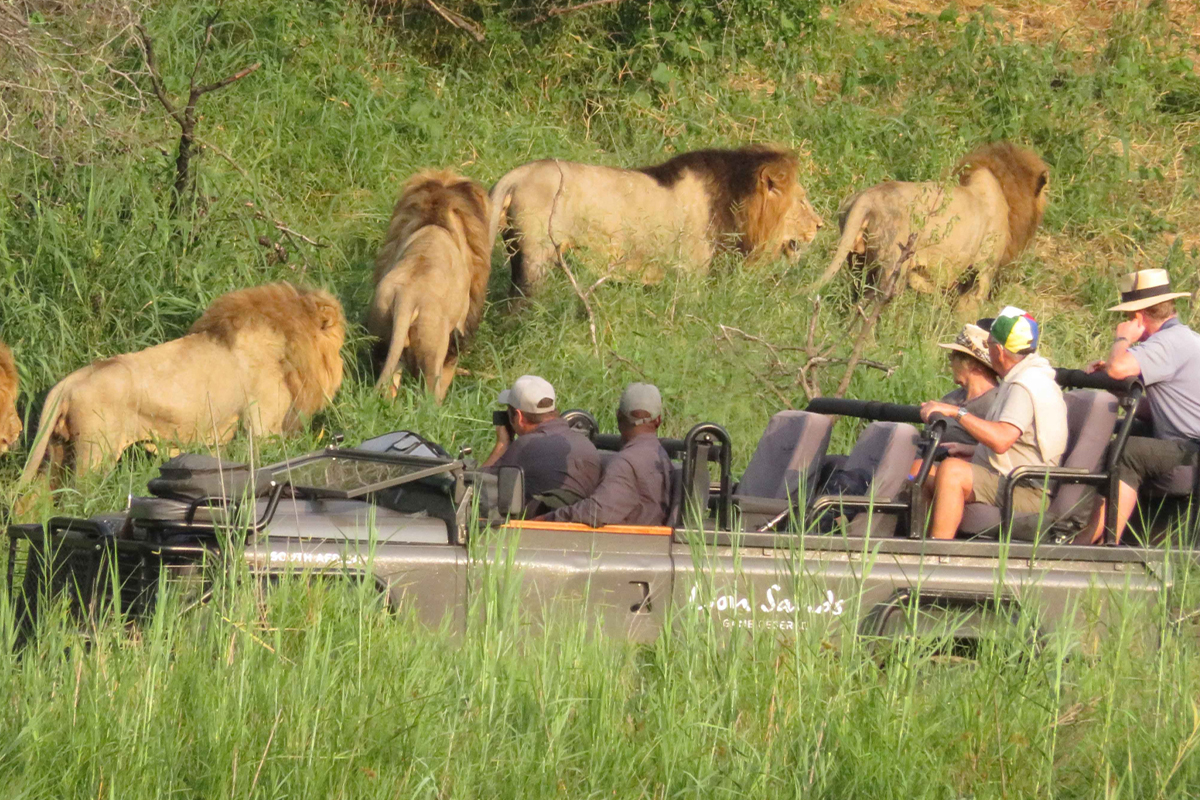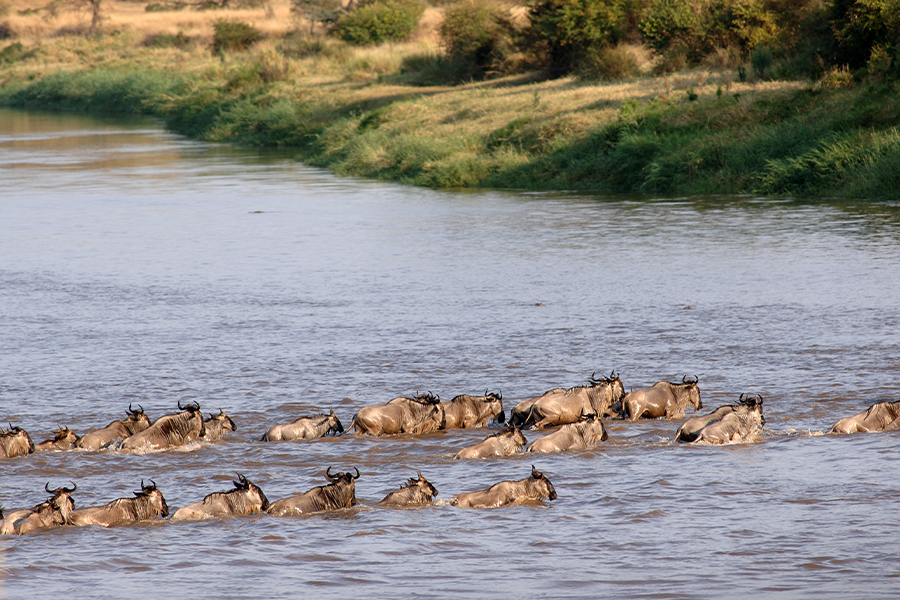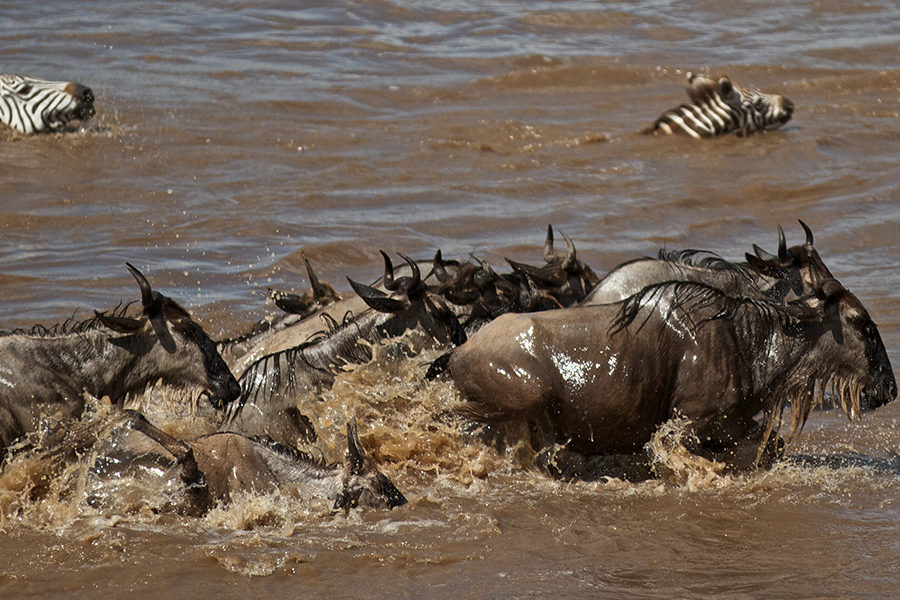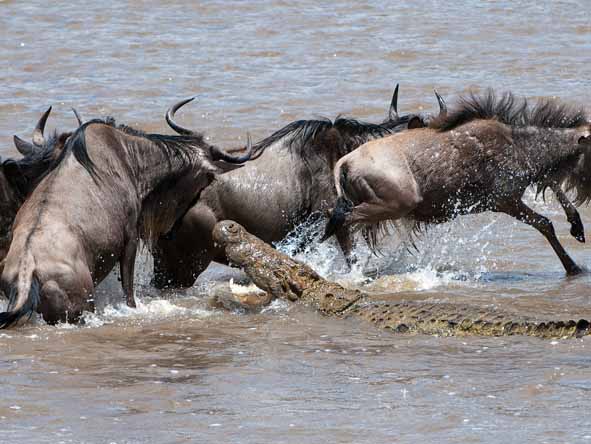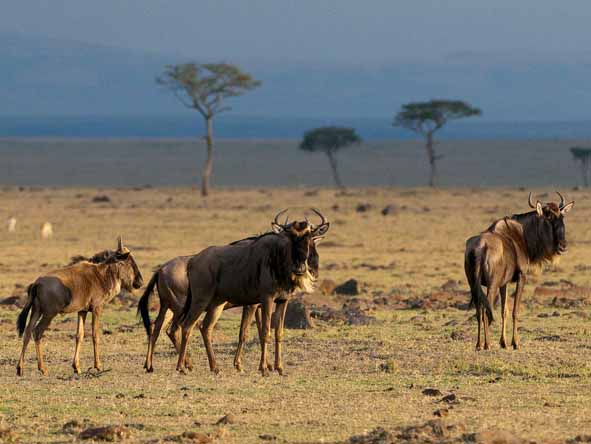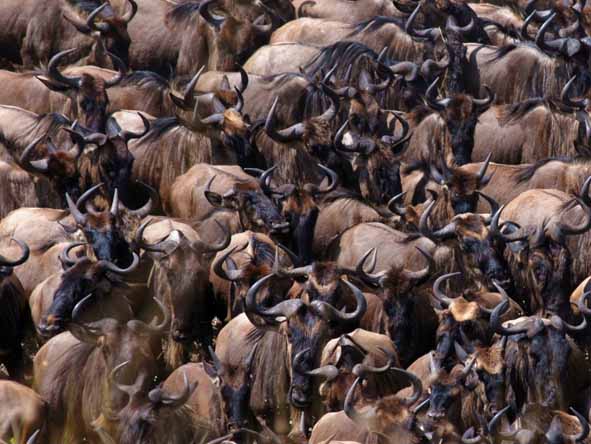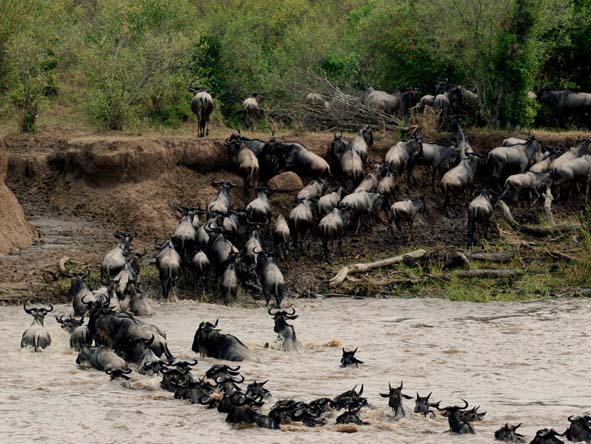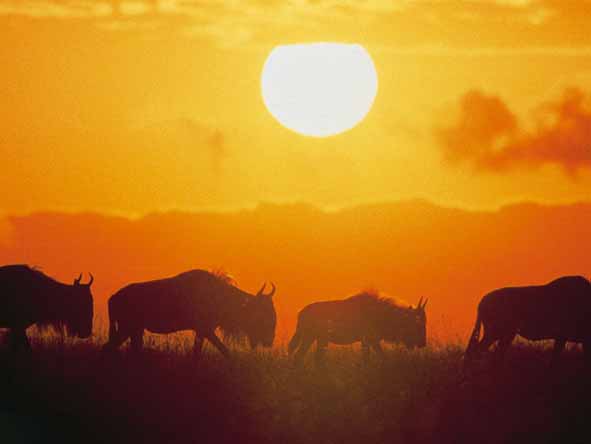Travel Advice: A Wildebeest Migration Safari
The Great Migration is a natural phenomenon as old as the land itself. Seasonal rainfall is the trigger that sparks this mass movement of mega-herds in pursuit of sweet, fresh grass that the gnus love so much. Since nature sets the schedule, planning a successful Wildebeest Migration safari takes experience and extensive local knowledge.
When to Go on a Wildebeest Migration Safari
The Migration takes a full year to complete a single cycle, which means that you can witness different stages throughout the year. But because the animals cover huge distances, certain highlights only happen in specific months:
| Approximate Time | Region | ||||
|---|---|---|---|---|---|
| Calving (Birthing) Season | January to March | Southern Serengeti | |||
| Intense Big Cat Action | January to March | Southern Serengeti | |||
| Rutting (a period of sexual excitement, reproductive activity and mating battles between males) | January to March | Southern Serengeti | |||
| Grumeti River Crossings | May to July | Western Serengeti | |||
| Mara River Crossings | July to September/October | Northern Serengeti & Masai Mara |
Note: the above are guidelines only. The Wildebeest Migration is a year-round journey and the river crossings cannot be predicted, although they generally occur between May and September. Sometimes the herds stay put for two weeks, other times they could cross four times in one day!
How the Wildebeest Migration Works
How to Book Your Wildebeest Migration Safari
 Since 1998, we’ve helped thousands of travellers from across the globe to witness one of Mother Nature’s greatest spectacles. Based on our first-hand experience and local knowledge, here are our top tips on planning a Wildebeest Migration safari:
Since 1998, we’ve helped thousands of travellers from across the globe to witness one of Mother Nature’s greatest spectacles. Based on our first-hand experience and local knowledge, here are our top tips on planning a Wildebeest Migration safari:
1. Right Place, Right Time
The Wildebeest Migration is a fluid, often unpredictable affair. It’s important to know where to go and when to go on a Great Migration safari to ensure your expectations are met.
2. Getting There
The Masai Mara is accessible by road or scheduled flight from Nairobi and usually combined with other parks. Access to the Serengeti is usually via a scheduled flight from Arusha Airport, located close to Mount Kilimanjaro International Airport. Most travellers overnight in the town of Arusha before flying into the Serengeti and can be combined with other parks for a diversified experience.
3. Avoid the Crowds
The Masai Mara National Reserve and Serengeti National Park experience high visitor and vehicle numbers during safari’s peak or high season (about June to October). The private conservancies adjoining the Masai Mara offer exclusivity, luxurious accommodation and excellent game viewing in sole-use areas. You’ll also be offered activities not permitted in the main reserve, such as night drives, bush walks and off-road game viewing.
There are camps in the Serengeti that are located a little further away from the Migration hot spots – meaning you can easily get to all the action, but also retreat to tranquillity.
4. Book Early
A Wildebeest Migration safari is a popular holiday experience in Africa, and accommodation and tours sell out quickly for each year’s migration. Lodges and camps in prime locations are usually booked out a year in advance.
5. Add on More
The Masai Mara and Serengeti combine easily with each other, and each can also form the focal point of a larger safari itinerary. We recommend combining the Masai Mara with Amboseli and Laikipia, or adding the Ngorongoro Crater, Tarangire and the Rift Valley Lakes to the Serengeti.
6. Diversify Your Game Viewing
A Wildebeest Migration experience can get busy, noisy, smelly, and far removed from a general Big 5 safari. We highly recommend ending at a lodge or camp that’s located away from the herds to enjoy a bit of tranquillity and a diverse game-viewing experience.
For general information on travelling to Kenya and Tanzania, visit our Kenya travel advice and Tanzania travel advice pages. 
Ready to Plan Your Wildebeest Migration Safari?
Chat with someone who’s been there – get in touch with one of our Africa Safari Experts to help you tailor-make the trip of a lifetime:

